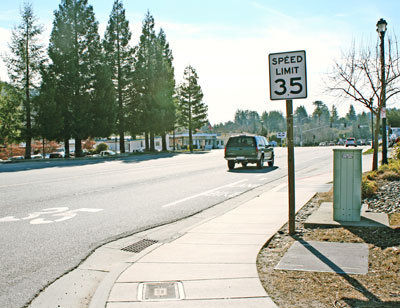
Each day without rainfall increases fire dangers in Scotts Valley and the San Lorenzo Valley, according to fire officials.
But after two consecutive years of ample rainfall, it’s too early, according to water district officials, to tell if the lack of rain will make the 2011-12 winter a drought year.
With no rainfall in January as of Wednesday, Jan. 11, precipitation totals are a far cry from this time last year. The San Lorenzo Valley and Scotts Valley have had no significant rainfall since the middle of December.
The San Lorenzo Valley Water District has recorded 6.93 inches of rain in the valley since Oct. 1, when the district started its rainfall year. Last year, a rainy year, the district had recorded 26.45 inches by this time.
“Based on the average, we should have had about 17 inches,” said Jim Mueller, general manager of San Lorenzo Valley Water District.
Since 1980, when the district began recording rainfall, only four years have had less rainfall by the end of December. That year, there were 6.09 inches by Jan. 1 (29 inches total that rainfall year); in 1986, 1.80 inches (18.80 inches total); in 1989, 4.3 inches (22.76 inches total) and in 1990, 3.8 inches (36.67 inches total). The annual average in the valley is more than 50 inches of precipitation.
Mueller said the district will wait until April to look at water conservation measures, because of the possibility of spring rains.
“Right now, if we get a lot of rain in the spring, it actually does more for us than if we get rain earlier in the year,” he said.
For the SLV Water District, late rain is advantageous, because the district draws most of its water from various tributaries in the valley.
Scotts Valley Water District has recorded 6.55 inches since its rainfall year began July 1. Last year at this time, 24.5 inches had been recorded, while on average, the city has seen 15.75 inches of rain by this time. Scotts Valley averages 43.28 inches of rain each year.
The majority of Scotts Valley’s water is drawn from wells, so regular rainfall that replenishes the local aquifers is best for the district’s water supply.
Fire danger increases
The Scotts Valley Fire Protection District has cautioned residents about higher than usual fire risks.
Dry vegetation has caused Cal Fire to suspend backyard burning in Santa Cruz County, because there is a greater potential to start wildfires in vegetation close to barbecues or burn piles.
The district also warns that wind can easily blow embers from fires or fireplaces into nearby plants, starting fires. Officials suggest that residents check their fireplaces for a spark arrester and make sure it works properly.
In addition, fireplace ashes should be discarded properly. Placing ashes in containers such as wood boxes, plastic trash cans and paper bags and then leaving them on a deck or in a side yard can be dangerous, officials warn. These remnants can remain hot for several hours and can start fires on decks or the side of house.
The district recommends placing ashes in a metal can with a lid and sprinkling them with water to make sure hot coals are extinguished before closing the lid.












